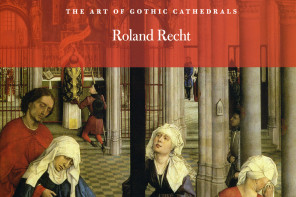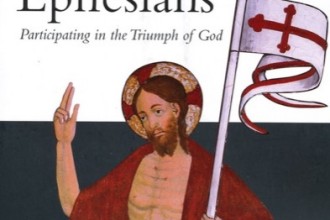Jonathan R. Wilson, God’s Good World: Reclaiming the Doctrine of Creation. Grand Rapids: Baker Academic, 2013, pp. 304, £ 16 / $25.
During the winter of 1932-33 Dietrich Bonhoeffer presented a challenging series of lectures that followed the biblical creation accounts found in Genesis 1-3. These were collected and first published as Schöpfung und Fall in 1937. Outside of the ordinary style for lectures at the University of Berlin, these were more in the style of Karl Barth’s commentary on Romans, attempting what Charles Marsh calls “a ruthless rending of veils.”[1]
It was also during this semester that Germany saw the violent end of the Weimar Republic and Adolf Hitler’s rise to power. The twenty-six-year-old Bonhoeffer took this opportunity to undermine the distorted understanding of creation that had lent theological support for the rise of the Third Reich. What Bonhoeffer does in these lectures is refuse to allow there to be a doctrine of creation apart from the redemption that is in Christ:
“…the story of creation must be read in a way that begins with Christ and only then moves on toward him as its goal; indeed one can read it as a book that moves toward Christ only when one knows that Christ is the beginning, the new, the end of our whole world.”[2]
Jonathan R. Wilson’s recent book, God’s Good World, is a doctrine of creation grounded in this dialectic of creation and redemption. “When the church and its teachers explicitly or implicitly, intentionally or unintentionally, separate creation and redemption,” Wilson contends, “our understanding of the gospel, our living it and witnessing to it become attenuated and even corrupt” (50). This is one of the tragic theological mistakes that Bonhoeffer witnessed in the German church during the 1930s.
In the first part of the book, Wilson develops this creation-redemption approach according to what he terms the “dialectic of the kingdom.” The kingdom is the “reality of God’s redemption of creation” (51). The world is the place where God’s redemptive work is taking place, where he is reconciling all things to himself. This is the “process” that is taking place in the creation, so that a doctrine of creation must be determined by an underlying soteriology.
This insistence on the creation/redemption dialectic leads Wilson to a trinitarian account of creation, something he accomplishes by addressing the grammar of our God talk. Through both a constructive account of trinitarian grammar in creation and redemption, and a lesson in how our God talk goes awry, Wilson gently critiques our bad habits of speech. Especially valuable in this section are numerous recognizable errors in the way we talk about creation. For example, if we leave out the Spirit in our talk of creation, and instead focus our attention on only the Father and Son, we risk making “God’s continuing work in the world… a rescue mission directed only toward humans, not…a redemptive mission directed toward all creation that is sustained and completed by the work of the Spirit” (87).
Wilson’s theological engagement with trinitarian grammar is followed by a chapter that sets out to be theological commentary on scripture. Here he reads scripture in light of the creation/redemption dialectic, insightfully interpreting texts from Revelation, Hebrews, Colossians, Romans, John, Isaiah, the Wisdom literature, Psalms, Deuteronomy and finally Genesis. By moving in this particular reverse order, Wilson attempts to follow N. T. Wright’s suggestion to read the Bible as a whole from the perspective of new creation.[3]
Wilson is a theologian for the church. As such, his concern for correct theological articulation is matched by his concern that the church live faithfully in the world, a world construed as God’s good world redeemed by its creator. Because of this, the book is the sort of doctrinal work that is an enormous help to the preacher or the church leader who is tasked with teaching the church and helping a congregation imaginatively live in a created and redeemed cosmos. It is the sort of work that easily engages current issues (e.g. climate change, social injustice) with the theological resources needed to change the way we see both the problems and the solutions.
For Bonhoeffer, looking at creation apart from Christ meant that the German Christians were able to construe the world in their (Aryan) image. Doctrinal accounts of creation that bypass the work of Christ, that do theology from nature, are always at risk of reinforcing our fallen-ness and making us the redeemers of the created order. Wilson, in a helpful way, carries on the tradition of Bonhoeffer by challenging us to begin with the new creation, a creation which still has for its center the tree of life, but this tree is the new, redemptive work of God that grows from the cross of Christ.
“What a strange tree of life, this trunk on which the very God had to suffer and die. Yet it is the very kingdom of life and of the resurrection, which by grace God grants us again.” [4]
Like Bonhoeffer’s lectures, God’s Good World locates the doctrine of creation in light of the grace of resurrection.
[1] Charles Marsh, Strange Glory: A Life of Dietrich Bonhoeffer, New York: Alfred A. Knopf, 2014, 155.
[2] Dietrich Bonhoeffer, Creation and Fall, DBWE, 3, Minneapolis: Fortress Press, 1997, 22.
[3] N. T. Wright, Surprised by Hope, New York: Harper One, 2012, 282.
[4] Bonhoeffer, Ibid., 146.
Samuel V. Adams (PhD, St Andrews) is Assistant Professor of Theology and Social Justice and Director of the Graduate Program at Kilns College, Bend, OR, USA.





